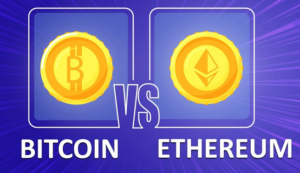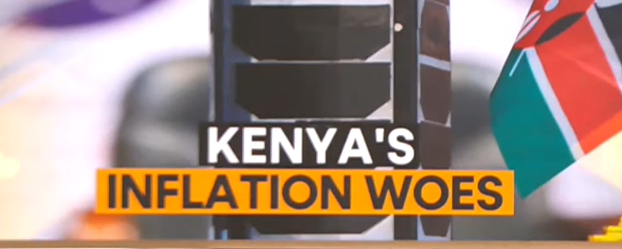Photos: YouTube Screenshots\Wikimedia Commons
Cryptocurrency, the digital currency that has taken the financial world by storm, has led to the creation of thousands of different coins and tokens. Among them Bitcoin (BTC) and Ethereum come at the top, attracting the attention of millions of investors. These two giants that are shaping the digital finance landscape have distinct differences that set them apart. This article will help you understand their unique features and how to differentiate them.

Their Origin
The stories behind the creation of Bitcoin and Ethereum are like pages from a thrilling novel. Bitcoin is the pioneering cryptocurrency introduced by an anonymous figure known as Satoshi Nakamoto in 2009. The mystery surrounding Nakamoto’s identity adds to the interest people have in the creation of Bitcoin. This enigmatic inventor envisioned Bitcoin as a digital alternative to traditional currencies, aiming to establish a decentralized system that operates outside the control of governments and financial institutions.
Ethereum on the other hand was conceived by the young and brilliant programmer Vitalik Buterin (shown below) in 2015. Unlike Bitcoin, primary goal of Ethereum was not just to serve as a digital currency, but to also create a versatile platform for decentralized applications, also known as DApps. Ethereum introduced the concept of smart contracts, which are self-executing agreements with the terms of the contract directly written into code. This innovation expanded the possibilities of blockchain technology and opened doors to various applications beyond mere transactions.

Use Cases and Functionality
The primary function of Bitcoin is to serve as a digital store of value. It operates on a simple and robust blockchain which records transactions and maintains the ledger of Bitcoin ownership. Bitcoin miners secure the network by solving complex mathematical puzzles earning new Bitcoins. This limited supply and mining process has earned Bitcoin the nickname ‘Digital Gold.’ This scarcity has translated to the currency gaining traction as a long-term investment asset.
Ethereum, while also using a blockchain, offers a more complex and flexible platform. Ethereum’s blockchain is Turing complete, which means it can run any program or contract that can be coded in the Ethereum programming language, Solidity. The introduction of smart contracts allows developers to create various projects, from decentralized finance (DeFi) platforms to non-fungible tokens (NFTs). Ether (ETH), the native cryptocurrency of Ethereum, fuels these applications and transactions on the network.
Underlying Technology
Bitcoin’s fundamental technology operates on a consensus mechanism known as Proof of Work (PoW). This method secures the network by requiring ‘miners’ to solve complex mathematical puzzles to validate and add transactions to the blockchain. PoW demands significant computational power, making the network robust but energy-intensive.
Ethereum started with PoW, similar to Bitcoin, but has transitioned to a more energy-efficient model called Proof of Stake (PoS). This upgrade reduces energy consumption by replacing mining with staking. Validators are chosen to create new blocks based on the number of coins they hold and are willing to lock up as collateral. They cast votes on the legitimacy of each new block by determining whether the transaction is legitimate before it is permanently added to the blockchain.
Supply Limit and Inflation: Scarcity vs Elasticity
Supply and inflation are concepts that are essential to understanding how these cryptocurrencies work. Bitcoin has a limited supply, capped at 21 million coins. This scarcity is built into its code, like having a fixed number of candies in a jar. As more people want a piece of the Bitcoin pie, its value increases due to the limited supply. This scarcity has led many to view Bitcoin as a potential hedge against inflation, similar to traditional commodities.
Ethereum on the other hand, doesn’t have a hard supply cap. There is no predetermined maximum number of ETH tokens that can be created. At the time of writing, there are over 120.27M Ether (ETH) in circulation, and more can be created through mining. That means Ethereum has a more elastic supply, which can lead to different economic dynamics compared to Bitcoin.
The Future Landscape and Coexistence
The future of Bitcoin and Ethereum looks promising, albeit with distinct trajectories. The evolution of Bitcoin focuses on being a secure, decentralized store of value, catering to those seeking a hedge against inflation or diversification of assets in their investment portfolios.
Ethereum strives to expand its utility through smart contracts and a robust ecosystem of decentralized applications. Its potential for redefining multiple industries beyond finance could make it a vital cog in the future technological landscape.
The coexistence of Bitcoin and Ethereum is not based on competition, but a symbiotic relationship, each serving different purposes in the ever-expanding realm of cryptocurrencies. They represent the yin and yang of the crypto world, demonstrating the coalescence of traditional finance with the futuristic promise of decentralization.
In essence, these two currencies offer features that are beneficial separately and also together. Bitcoin is the digital gold and works well with secure peer-to-peer transactions, while Ethereum’s strength is with smart contracts. Deciding between the two currencies will depend on your investment goals, risk tolerance and belief in the potential of blockchain technology. Both cryptocurrencies have their merits and unique features that make them valuable assets.








